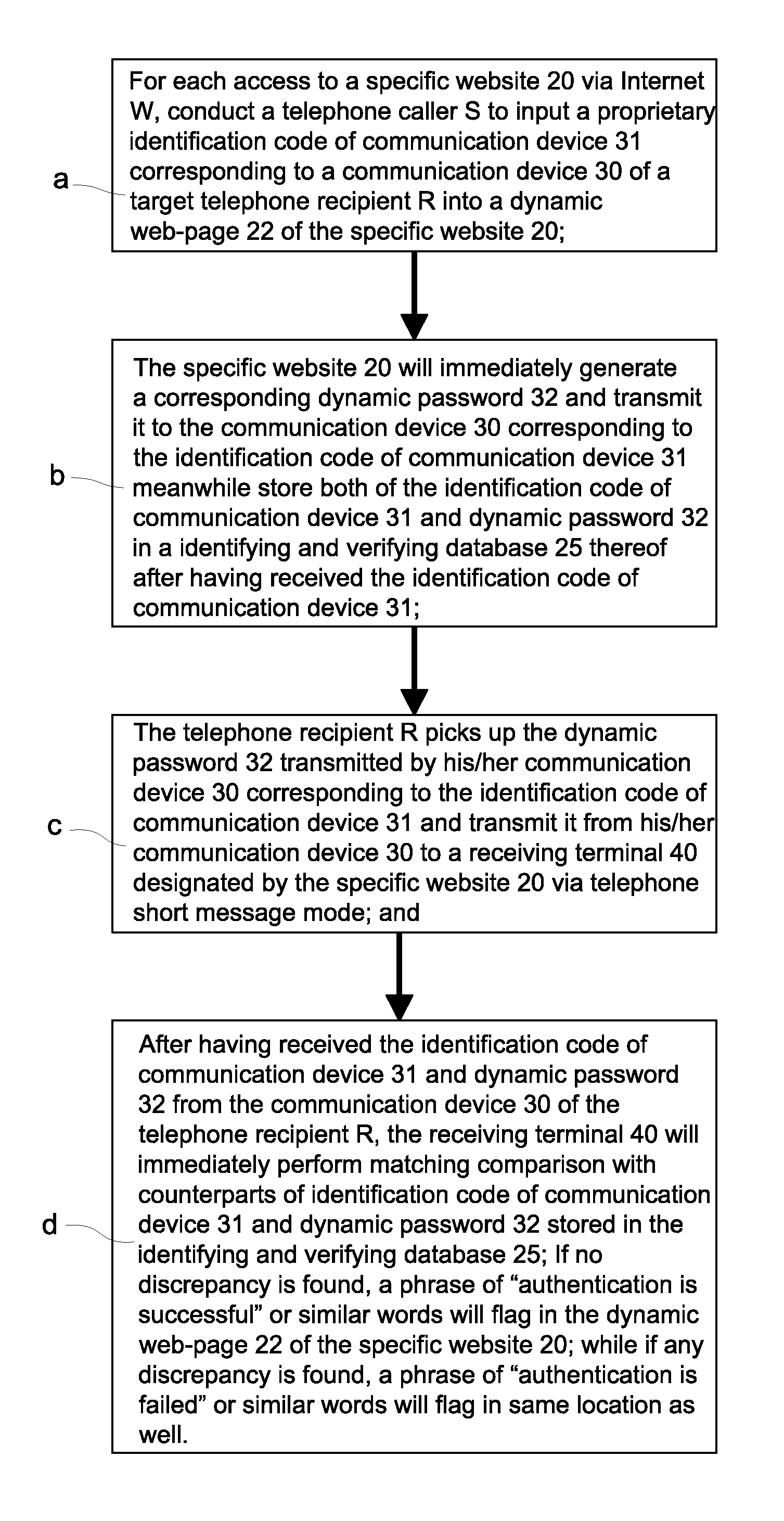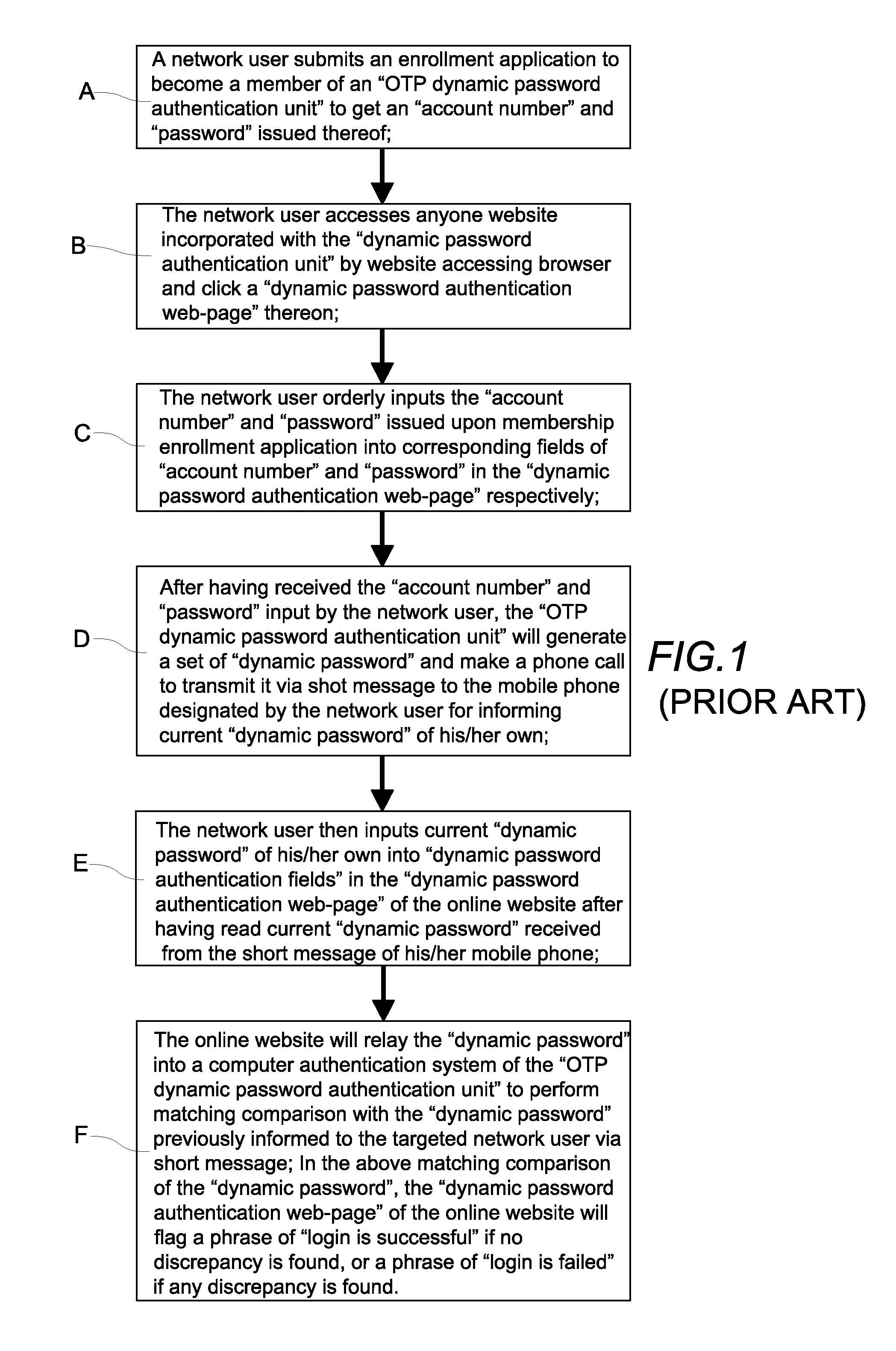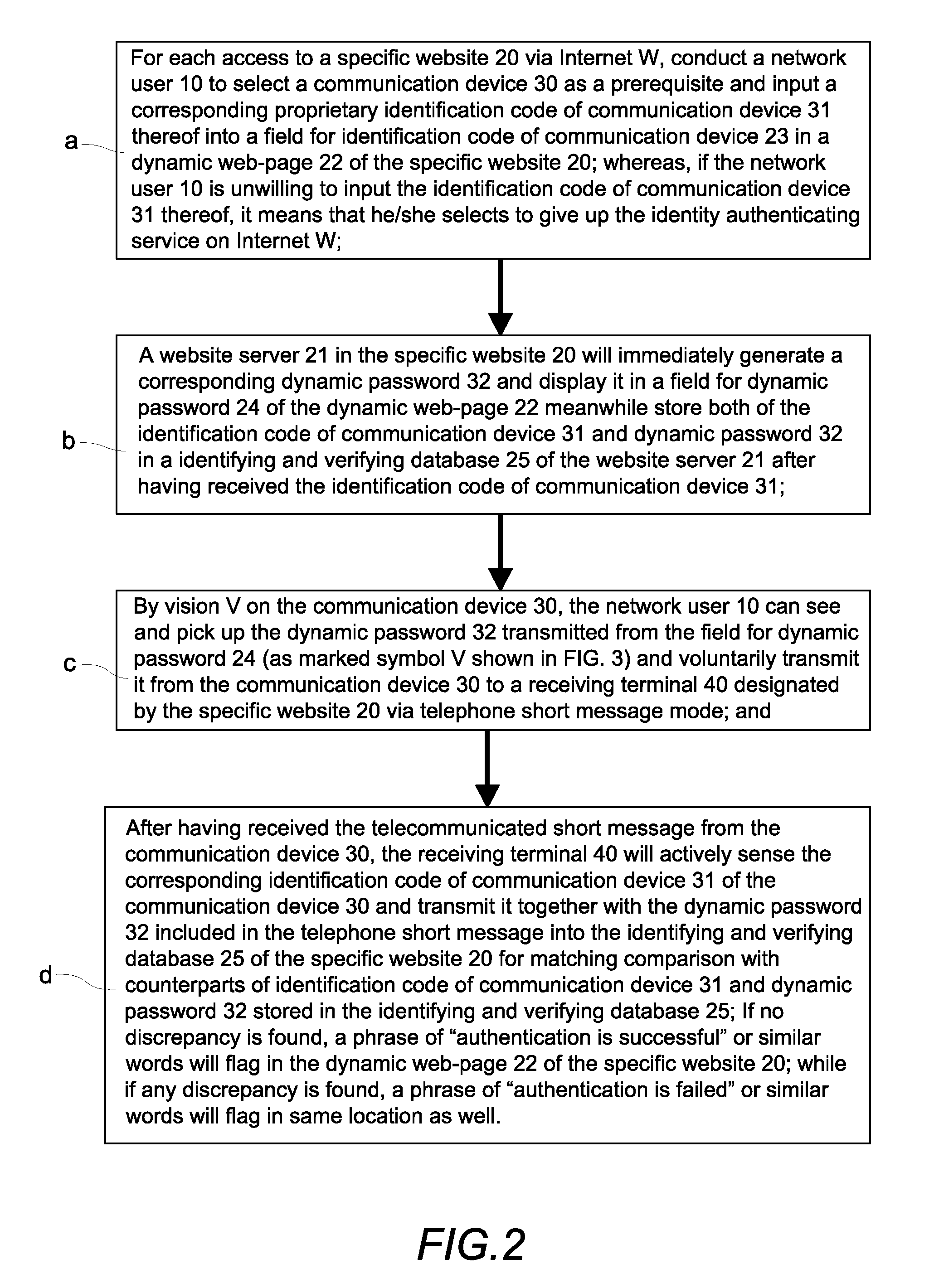Method of identity authentication and fraudulent phone call verification that utilizes an identification code of a communication device and a dynamic password
a communication device and dynamic password technology, applied in the field of identity authentication and fraudulent phone call verification, to achieve the effect of facilitating unauthorized access to the user's computer system and malicious disruptive behavior or sabotage by cyber hackers
- Summary
- Abstract
- Description
- Claims
- Application Information
AI Technical Summary
Benefits of technology
Problems solved by technology
Method used
Image
Examples
Embodiment Construction
[0046]Please refer to FIGS. 2 and 3, which show a first exemplary embodiment of a method of identity authentication and fraudulent phone call verification by using an identification code of a communication device and a dynamic password, comprising following procedural steps:
[0047]a. For each access to a specific website 20 via Internet W, an Internet user 10 is caused to select a communication device 30 as a prerequisite and input a corresponding proprietary identification code 31 of the communication device into a field 23 for the identification code of the communication device that is included in a dynamic web-page 22 of the specific website 20 for which access is sought; if the Internet user 10 is unwilling to input the identification code of a communication device 31, it means that he / she has elected to give up the identity authenticating service on Internet W;
[0048]b. A website server 21 in the specific website 20 will immediately generate a corresponding dynamic password 32 an...
PUM
 Login to View More
Login to View More Abstract
Description
Claims
Application Information
 Login to View More
Login to View More - R&D
- Intellectual Property
- Life Sciences
- Materials
- Tech Scout
- Unparalleled Data Quality
- Higher Quality Content
- 60% Fewer Hallucinations
Browse by: Latest US Patents, China's latest patents, Technical Efficacy Thesaurus, Application Domain, Technology Topic, Popular Technical Reports.
© 2025 PatSnap. All rights reserved.Legal|Privacy policy|Modern Slavery Act Transparency Statement|Sitemap|About US| Contact US: help@patsnap.com



